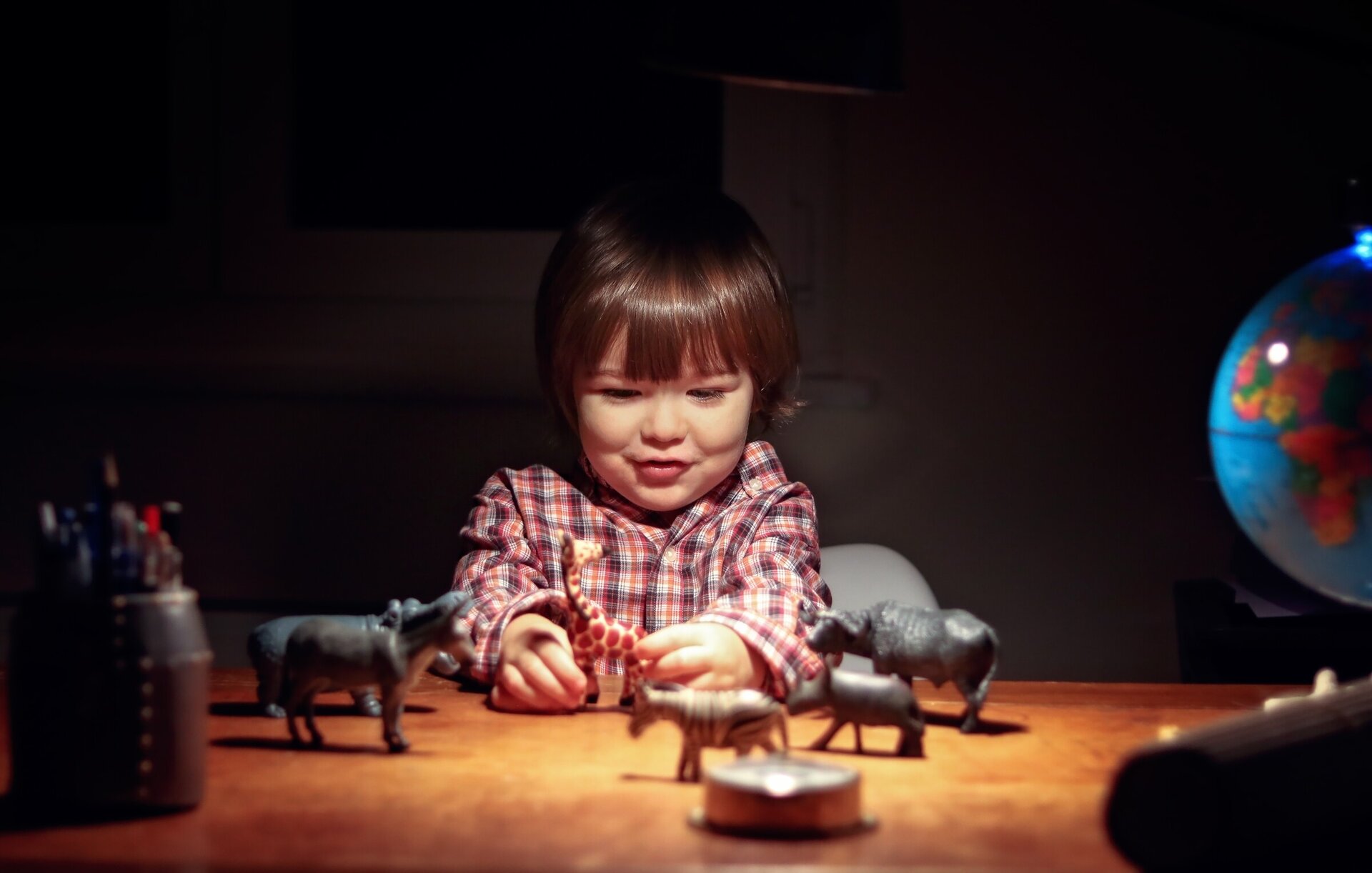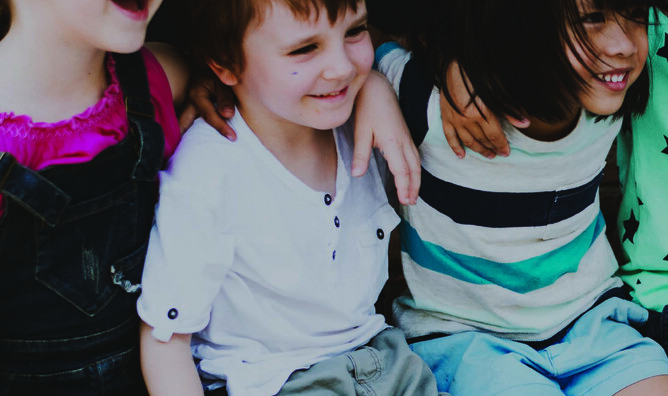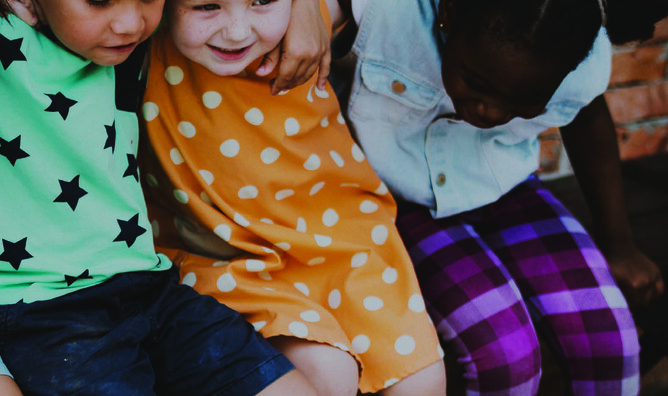Initial findings of an investigation into New Zealand Early Childhood Teachers’ perspectives on Spirituality, Wairua and Teaching by Cheryl Greenfield, Manukau Institute of Technology.
Te Whāriki, he Whaariki matauranga mo nga mokopuna o Aotearoa: Early childhood curriculum, includes an aspiration for all children, that they grow up "healthy in mind, body, and spirit" (Ministry of Education, 2017, p. 5), thereby, providing a clear acknowledgement that early childhood education services must foster and nurture growth and development in all aspects, including the child’s spirit.
Early childhood teachers are part of a child’s socio-emotional, moral and spiritual life in a critical period of their lives. Therefore teachers need to very mindful of the role they play in fostering moral and spiritual development and sustaining it. Cultural inclusion is deeply embedded within Te Whāriki underpinned by the belief that tamariki are historically and culturally situated and that the wairua of tamariki must be nurtured and protected. Spiritual development is integral to the development of self.
It is vital therefore that the spiritual aspect of children’s development is not pushed out of sight and put into the too hard basket by teachers. The literature highlights how the spiritual life of a child emerges in relationship with a caring adult and argues that caring for a young child’s spiritual growth is an integral part of early childhood pedagogy (Elton-Chalcraft, 2002; Greenfield, 2011, 2012; Harris, 2007; Heald, 2008; Mata, 2014; Meade, 2003; Myers, Sweeney and Witmer, 2000; Nye, 2009; for example).
"Cultural inclusion is deeply embedded within Te Whāriki underpinned by the belief that tamariki are historically and culturally situated and that the wairua of tamariki must be nurtured and protected."
It is this premise that leads to the undertaking of this research project and some of those finding are presented here in this article.
The study sought teacher’s perspectives on their understanding of spirituality and ‘wairua’ and the role they have in fostering this aspect of children’s development. 24 fully certificated and registered teachers working in a range of early childhood settings participated in completing a questionnaire via Survey monkey.
Teachers were asked about their understanding of: ‘wairua’; ‘spirituality’; what they understood the identified statements in Te Whāriki meant for them in practice as a teacher; how intentional their fostering of spirituality and wairua were; what role the physical environment plays in nurture a child’s spirit; did their Initial Teacher Education programme cover fostering spirituality; and would they benefit from participating in professional development on this topic.
Respondents were overwhelming in agreement that the concept of ‘wairua’ and spirituality are interwoven with both being about the spirit, soul, inner being, heart, the sum of who you are and the core of a person.
Spirituality was also seen as an aspect of humankind that seeks justice, celebrates diversity and is creative. Other participants referred to spirituality as inner joy, peace and happiness. Some participants mentioned aspects like consciousness, something you feel, a connectedness to others, God and the environment. Many identified that spirituality is knowledge of who you are and your own uniqueness.
Several acknowledged that too often though this aspect of Te Whāriki is not talked about by teachers and not on a priority list. Children’s spirituality often supported by default not intentionally. Though when asked about whether they intentionally foster spirituality and the Wairua of the child 79.17% said yes and 20.83% were unsure of how to foster children’s spirituality.
In spite of this many respondents were able to articulate how they fostered spirituality and the nurtured the wairua of the child. ways spirituality and wairua were fostered provided a fairly comprehensive list as follows:
• Karakia and prayer
• Respectful relationships
• Learning whakapapa
• Providing an environment where children can express themselves and talk about what is important to them
• Listening to children and their families
• Being kind
• Fostering secure attachments
• Connection to nature/natural world
• Modelling the behaviours we want children to have
• Having opportunities to care for each other and those younger
• Celebrating cultures and religious festivals
• Giving hugs
• Seeing beyond the external behaviour
• Being interested and following children’s interests.
Participants described the environment as needing to be clean, aesthetically pleasing, safe, not too crowded and enables children to move at their own pace. Evidence of children’s own backgrounds, non- fiction books, and having culturally responsive resources was also mentioned. The layout of the space and having sensory appropriate colours and lighting was spoken about.
Many identified that spirituality is knowledge of who you are and your own uniqueness.
The majority of participants indicated an inviting, stress free, peaceful, engaging environment filled with natural resources and nature was optimal. A few interesting comments were made about the impact the ‘spirit’ of the environment has especially on infants and toddlers pointing out that this can be negative or positive but evident in the children’s behaviour.
Given that Pandya’s (2017) study on teacher’s perspectives had found that length of service did influence how teachers’ view spirituality. The length of service and the depth of understanding evidence in the responses in this study did have some correlation.
Of 12 who wrote the most fullest and considered responses, and were able to articulate what in their practice supported and nurtured children’s spirituality and wairua, nine had been teaching for 13 years and five teaching between two and eight years. However their Initial Teacher Education programmes were not instrumental in them gaining this knowledge with thirteen participants saying there was no coverage at all.
Therefore service managements, teachers, teacher educators and parents must think about our relationships with the outdoors and with each other, including relationships with the environment.
This study has highlighted that a spiritual curriculum of a young child embraces relationships and will blossom within a comfortable, playful, nature filled environment that sparks children’s interests, where compassionate teachers provide consistent and secure environments filled with rituals and routines that nurture a young child’s head, heart, spirit and soul. The spiritual approach to education is not so much about should be taught but how we should teach.
References
Elton-Chalcraft, S. (2002). "Empty Wells: How well are we doing at spiritual well-being?" International Journal of Children's Spirituality 7(3): 209-328.
Greenfield, C. (2011). Outside is where we need to be: A guide to providing optimal outdoor environments in early childhood settings. Auckland, New Zealand, Manukau Institute Technology.
Greenfield,C.(2012a). Fostering children’s moral and spiritual development in the outdoors. Christian Early Childhood Association magazine, Summer edition, 11-14.
Greenfield,C. (2012)b. Valuing the secret places: A sense of being away from adult gaze. In j Hansen, B. Hagan, and L Howie (2012). Fresh provocations: Rethinking practices in early childhood education (pp.55-66). Auckland, New Zealand: Manukau Institute of Technology
Harris, K. (2007). "Re-conceptualizing spirituality in the light of educating young children." International Journal of Children's Spirituality 12(3): 263-275.
Heald, D. (2008). "An exhaustible web of meaning:The many dimensions of spirituality." Early Education 44: 13-15.
Mata, J. (2014). "Sharing my journey and opening spaces: Spiritualty in the classroom." International Journal of Children's Spirituality 19(2): 112-122.
Mead, H. (2003). Tikanga Maori: living by Maori values. Wellington, New Zealand: Huia Publishers
Ministry of Education. (2017). Te Whāriki, he whaariki matauranga mo nga mokopuna o Aotearoa: Early childhood curriculum. Wellington,New Zealand: Author.
Myers, J., et al. (2000). "The wheel of wellness counselling for wellness: A holsitic model for treatment planning." Jounral of Counselling and Development 78(3): 251-266.
Nye, R. (2009). Children's spirituality: What it is and why it matters. London, UK, Church House Publishing.
Pandya’s (2017) Teachers’ views on spirituality for adolescents in high schools across countries Pastoral Care in Education. An International Journal of Personal, Social and Emotional Development. Vol 35,(2), 88-110.


